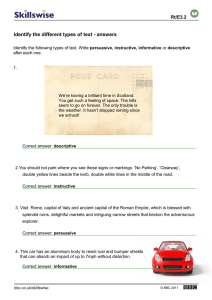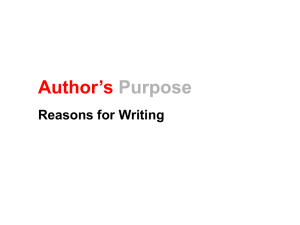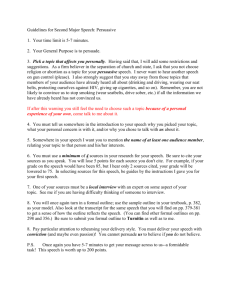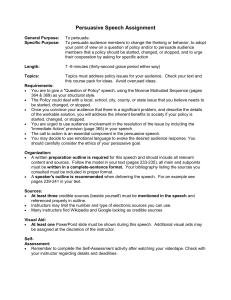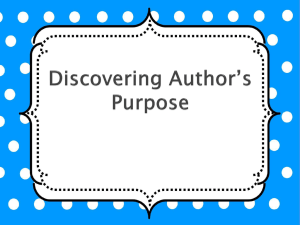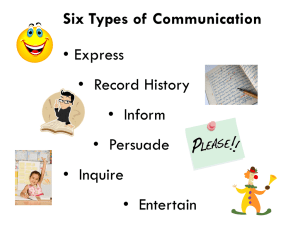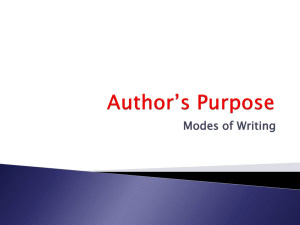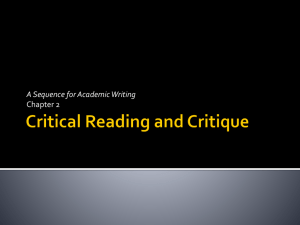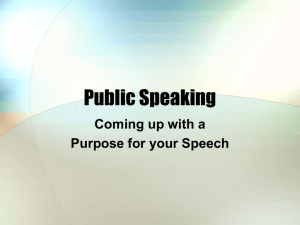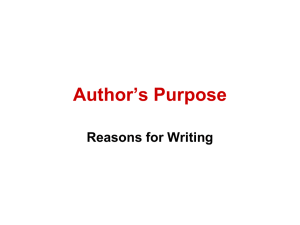Purposes of Text: Inform, Entertain, Persuade, Instruct, Describe
advertisement
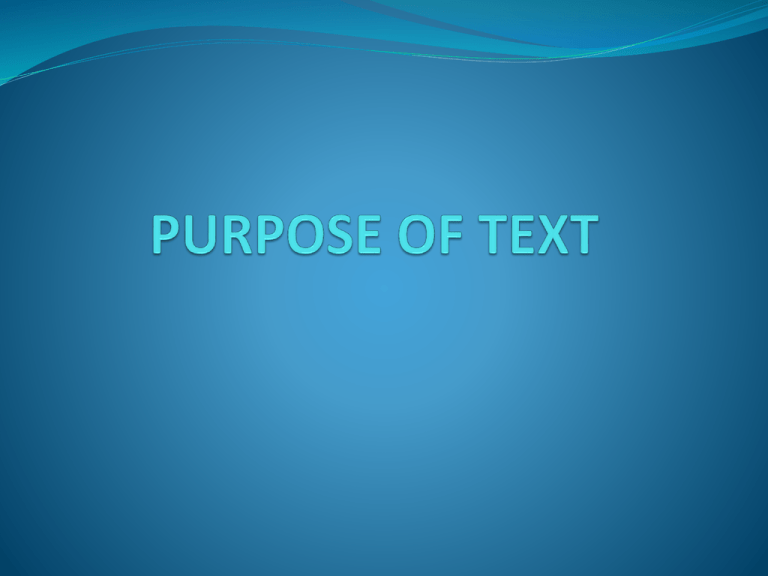
What is text? Text is any piece of writing, something that has been written down. Try and think of some examples of different types of text: magazine newspaper e-mail poem timetable dictionary encyclopaedia report memo letter recipe Menu shopping list novel phone text When sitting the Functional English tests you will be required to answer a variety of questions based on identifying the main purpose of text. So it is important to understand that texts have different purposes and that some texts have more than one purpose. Audience and Purpose All text is written for a reason – that is the purpose of the text. When an author writes he/she will have an intended audience in mind. Sometimes it is easy to tell why something has been written. You can tell that a set of instructions has been written to instruct you how to do something. A leaflet from a political party is trying to persuade you to do something. (vote for them). A descriptive text wants you to picture what is being described e.g a travel book wants you to picture the country it is describing. Sometimes it may be harder to tell why something has been written. E.g. Some newspaper articles may be informing, entertaining and persuasive. Main purposes of text INFORM ENTERTAIN PERSUADE INSTRUCT DESCRIBE (matching exercise) Depending on the purpose of the text writers will use different methods to get the message across to the reader. INFORM Informative text gives you the facts about something. E.g train timetable leaflet INFORMATIVE TEXT USUALLY Avoid repetition. Contain facts. Give information in a clear way. E.g The movie will start at 7:30 and finish at 10:30. Your course will start on the 28th September and run for 30 weeks. PERSUADE Persuasive text is written to try and change or influence the readers way of thinking. E.g. adverts , political leaflets, charity leaflets. Persuasive Text May Use Repeated words Capital letters Exclamation marks Rhetorical questions (questions that don’t need an answer) One sided argument Humour e.g. SPECIAL OFFER! Do you need a break? INSTRUCT Instructive text tells you how something should be done through a series of sequenced steps. E.g recipes, directions, instructions with flat pack furniture. Instructive Text Sometimes Use verbs at the beginning of a sentence. Use must or must not Use diagrams Use numbers or bullet points. e.g. Stand the ladders against a wall. You must add the egg and butter together. DESCRIBE Descriptive writing paints a picture with words. Uses sensory language, how something looks, feels , smells etc. E.g travel books, novels. Descriptive Text Use adjective and adverbs Use comparisons (saying something is like something else) E.g The pavement was wet beneath his feet like a slimy wet fish. ENTERTAIN A piece of text that has been written to entertain in some way, to give pleasure or enjoyment E.g A novel, a play, a poem
